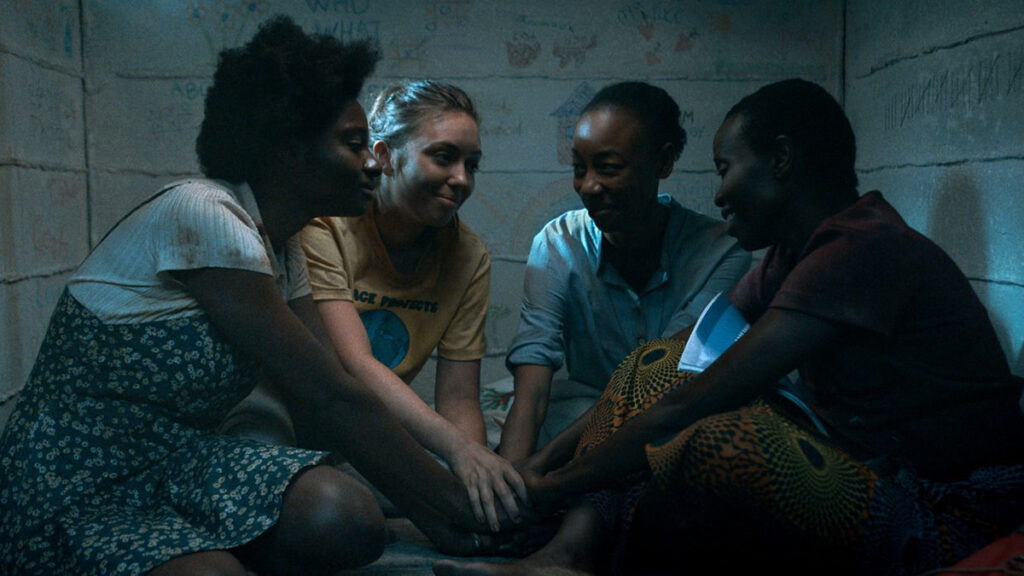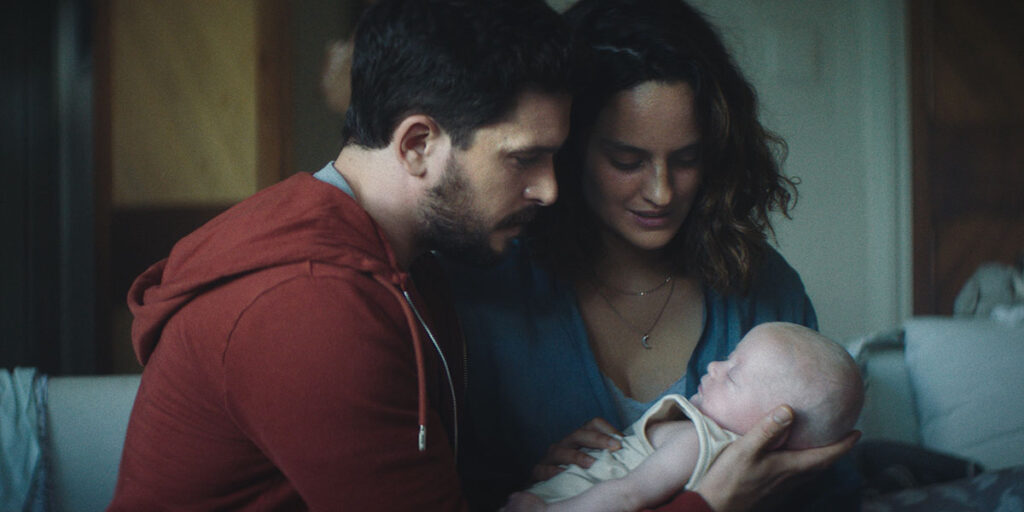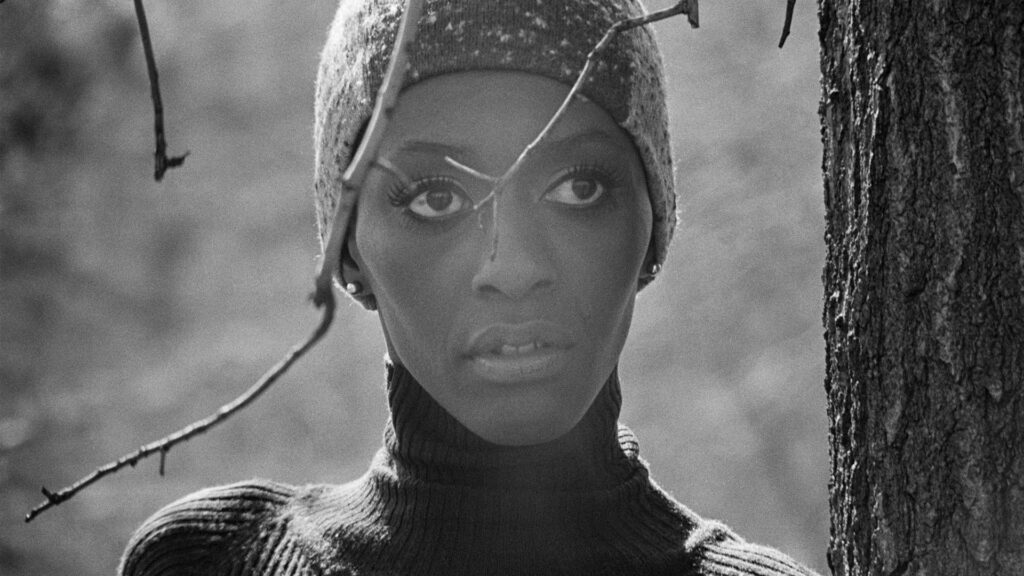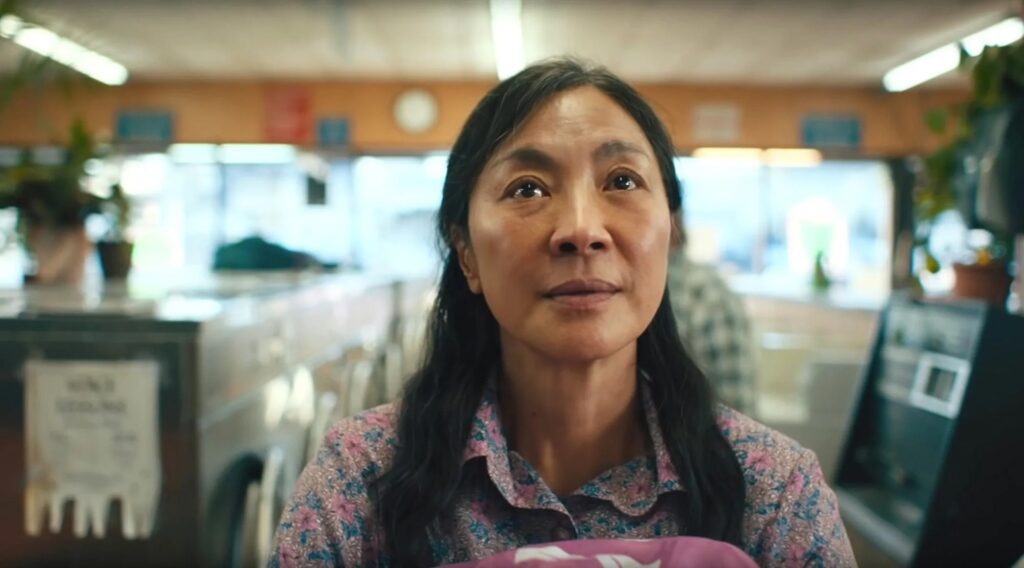As has been well documented in the decades following the gruesome Rwandan civil war, the Tutsi minority ethnic group and moderate members of the Hutu ethnic group were subjected to unimaginable violence between April and July 1994. A small handful of films emerged in an effort to better explain the complex nature of the genocide of more than 500,000 Tutsis over this shockingly short period of time.
The most famous among American audiences, of course, is “Hotel Rwanda,” starring Don Cheadle and Sophie Okonedo, which followed real-life hero and Rwandan hotel manager Paul Rusesabagina on his quest to protect more than 1,200 Tutsi and Hutu refugees.
Nearly 30 years later, the Rwandan war is revisited with “Trees of Peace,” by American writer-director Alanna Brown. The story is told through the lens of four women — all strangers — who are forced to hide in a claustrophobic underground cellar in order to survive daily attacks, hunts, and round-ups from militiamen on a mission to cleanse their nation of all Tutsis.
Annick (Eliane Umuhire) and her husband Francois (Tongayi Chirisa) are both educated Hutu moderates who have avoided committing violence themselves. By April 1994, it’s clear that they won’t be safe out in the open or even in their own home. The story opens on Annick, desperately clearing out the small cellar underneath their kitchen, as gunfire and shouting echo outside. As the chaos mounts, Francois locks Annick, who is five months pregnant, in the cellar underneath their kitchen to protect her from unannounced raids. He must travel between safe spaces, friends’ homes, and the school he teaches in to stay hidden from soldiers who will undoubtedly expect him to fight and kill by their side — or die as a traitor.
Annick is joined by Jeanette (Charmaine Bingwa), a devout nun; Mutesi (Bola Koleosho), a terrified young Tutsi; and Peyton (Ella Cannon), a mysterious young American. Mutesi is angry, full of venom, and resentful that her salvation has essentially led to her imprisonment among strangers. She has no time for Jeanette’s prayers or Peyton’s gentle nature, and especially isn’t interested in taking orders from Annick. Peyton is quiet, introspective, and seemingly unwilling to take advantage of her American nationality to free her from what has become literal hell. Jeanette is gentle, pious, and wounded from repeated childhood trauma.
The tiny cement hole where they must reside for an indeterminate amount of time gets smaller and more stifling with each passing argument, until the four women learn to co-exist despite their differences. For Annick, all she wants is for this pregnancy — her fifth — to be successful. Though she has taken these women under her wing, she hopes to be reunited with Francois and to welcome motherhood in relative peace, a goal she’s clung to for far longer than the Rwandan war.
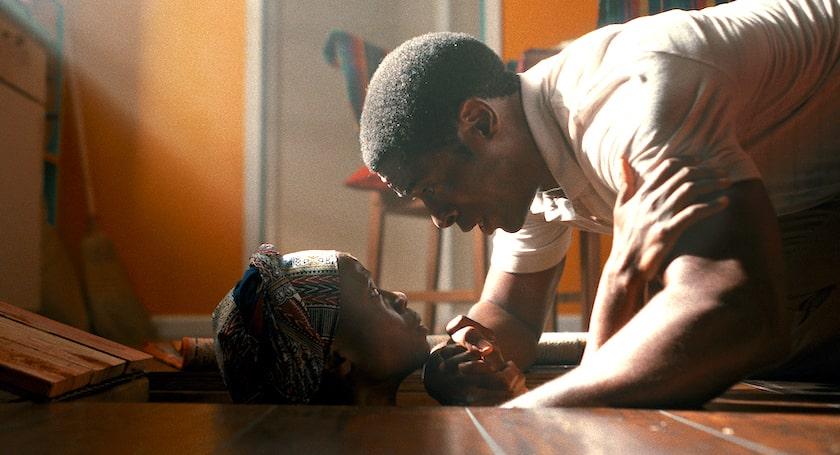
“Trees of Peace”: Netflix
As a director, Brown naturally leans into the cramped quarters, often framing the characters in compact close-up and medium shots, or spying their monotonous daily routines from above. Powerful, nuanced performances from all four leads help maintain authenticity and a cinematically immersive experience within the characters’ makeshift bunker. Brown mentioned at one screening during the Phoenix Film Festival in 2021 that the vast majority of “Trees of Peace” was shot on a soundstage in Los Angeles, and as The Cinemaholic notes, the entire film was shot in less than a month.
During another filmmaker event at the Phoenix Film Fest, producer Ron Ray earned praise after revealing that although he had already secured funding for his own project, once he met Brown and read her script, he knew he needed to prioritize getting “Trees of Peace” made first. It was a wonderful show of collegiality and allyship, considering this was Brown’s feature debut, and most producers are hesitant to take chances on filmmakers without a robust portfolio.
Ray’s instincts were certainly proven to be spot-on, as Brown spent several months on the film festival circuit with “Trees of Peace,” earning various awards along the way, including Best Director and Best Picture at Phoenix. Netflix’s acquisition, announced in March 2022, has brought the film to tremendously more audiences than most independent films experience. It appears to be performing well so far on the platform, earning a spot among the Top 10 Netflix movies within its first week, and doing so even without a full-bodied promotional campaign.
“Trees of Peace” contains the elements of other grounded character dramas that provide a unique perspective surrounding a well-known historical event. It’s one that will quietly reach audiences who are intrigued by the story of four women who persevere against all odds to survive while also learning to love complete strangers unconditionally even when cultural differences appear to be insurmountable.
Though it’s not based on a true story, Brown takes care to honor the work of those who sought to rebuild Rwanda after the killing ceased. The real-life heroes who pursued a way forward, with healing and accountability at the forefront of their mission, are clear inspirations for Brown and seem to infuse her characters — particularly Annick, the calm, guiding light, and lead hero.
In 2008, Brown spoke with Francine Lefrak, founder of Same Sky, an organization dedicated to the rehabilitation of women survivors in Rwanda and throughout the world. History vs. Hollywood quotes Brown talking at Peoria Film Fest in 2021 about the meeting, explaining what stood out to her most about the women Lefrak sought to assist: “In prepping to interview [her], I started coming across real survival stories of women and just people in general, and was so gripped by the will to survive such a harrowing ordeal, without food, without water, sometimes without shelter, hiding in the most extreme circumstances you could possibly imagine and hanging on to life.”
“Trees of Peace” is a true indie film success story, a project which raised over $65,000 from more than 350 Kickstarter supporters, and earned nationwide festival recognition. It’s also a superb example of a high-quality film that didn’t necessarily play at the biggest American film festivals before nabbing that coveted Netflix distribution deal. Finally, it’s a testament to the power of subtle, understated storytelling that can have a lasting impact, while also respecting the complex and difficult history it seeks to portray.
“Trees of Peace” is available to watch on Netflix. Follow writer/director Alanna Brown’s production company on Instagram @abrowngirlfilms.
Under the Radar offers a chance for us to highlight works by and/or about women that haven’t received big releases or significant coverage in the press, but are wholly worthy of attention.
